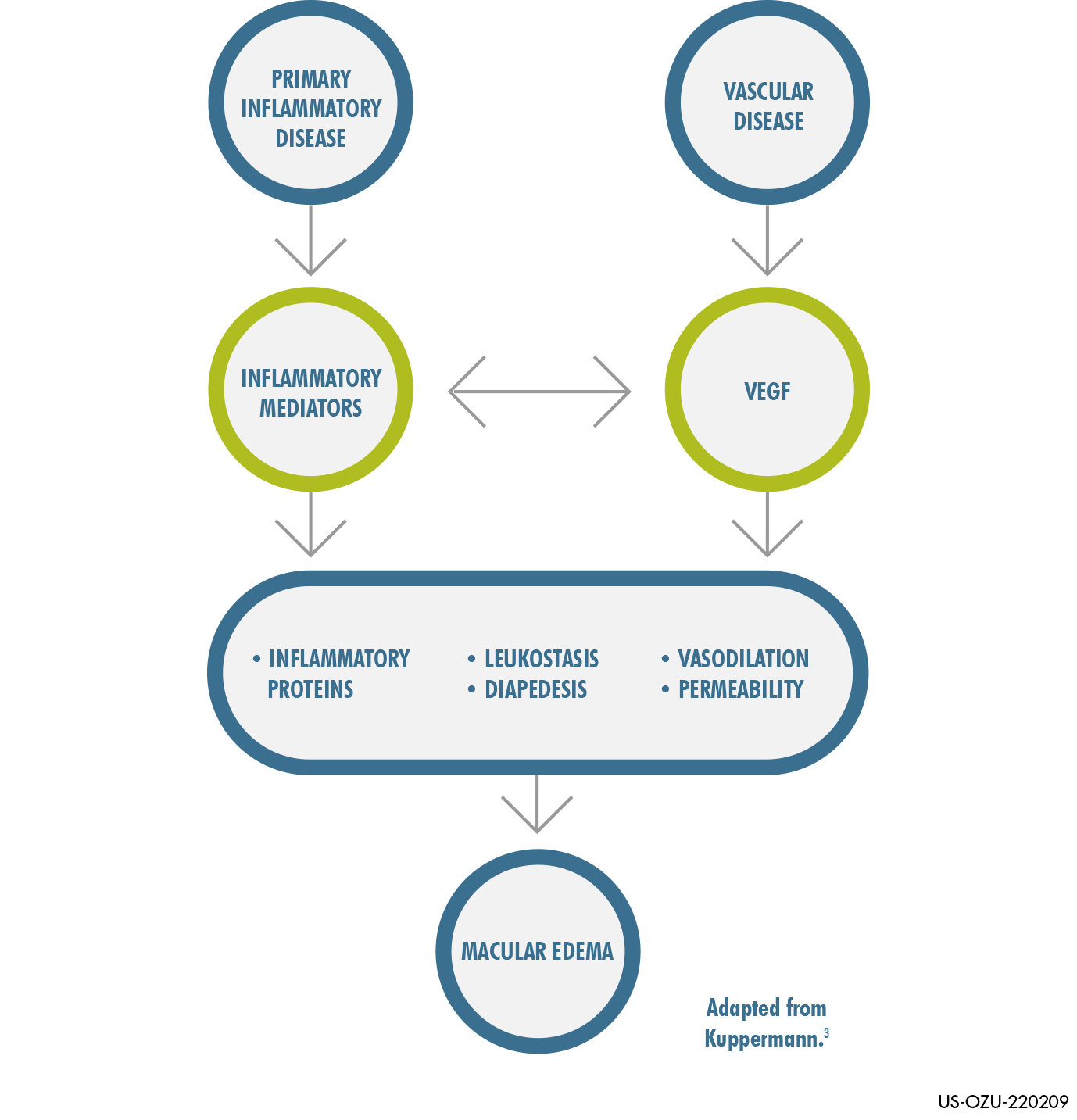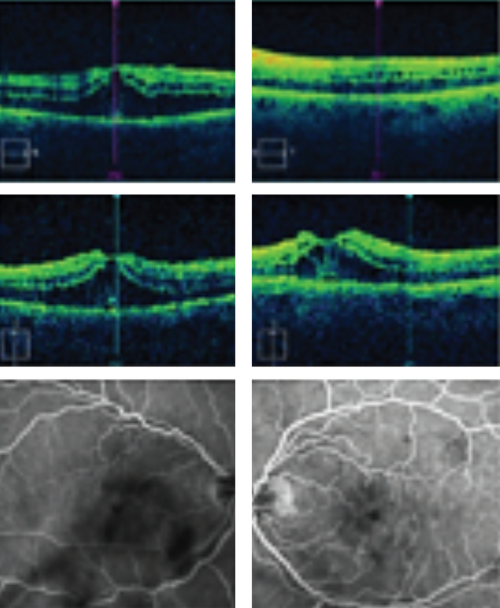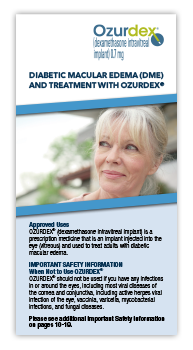- OZURDEX® is approved for patients with DME, RVO, and noninfectious posterior segment uveitis.4 See DME efficacy data
- Suppresses inflammation by inhibiting multiple inflammatory cytokines without the need for monthly injections4
- Reinjection with OZURDEX® may be considered at the physician's discretion whenever residual macular edema is present4
THE ROLE
OF OZURDEX®
- For diabetic macular edema (DME)
- For macular edema following branch retinal vein occlusion (BRVO)
or central retinal vein occlusion (CRVO) - For noninfectious posterior segment uveitis
- For diabetic macular edema (DME)
- For macular edema following branch retinal vein occlusion (BRVO)
or central retinal vein occlusion (CRVO) - For noninfectious posterior segment uveitis
MACULAR EDEMA IS
MULTIFACTORIAL
- Macular edema is defined as an accumulation of extracellular or intracellular fluid (or both) in the central part of the retina2
- Multiple inflammatory mediators are present at the sites of macular edema2:
— Angiotensin II
— Chemokines
— Cytokines
— Inflammatory cells (macrophages and neutrophils)
— Intercellular adhesion molecule-1 (ICAM-1)
— Interleukins
— Matrix metalloproteinases
— Prostaglandins
— Selectins
— Vascular cell adhesion molecule-1 (VCAM-1)
— Vascular endothelial growth factor (VEGF)
PATHOPHYSIOLOGY OF MACULAR EDEMA

- The pathophysiology of macular edema involves an inflammatory response in the microvessels of the retina and the decay of tight junctions in the cell walls3
- The cascade is caused by vascular disease, such as DME* or RVO,† or primary inflammatory disease, such as uveitis3
- The cascade is facilitated by inflammatory cytokines that lead to vasodilation, leukostasis, diapedesis, increased vascular permeability, and the accumulation of various inflammatory proteins3
*DME = Diabetic macular edema.
†RVO = Retinal vein occlusion.
TARGETING INFLAMMATION TO
REDUCE MACULAR EDEMA
- Consider addressing inflammation early in the treatment of DME and RVO
- OZURDEX® has the ability to suppress inflammation by inhibiting multiple inflammatory cytokines4

OZURDEX® HAS BEEN STUDIED IN 5 CLINICAL TRIALS OF OVER 2500 PATIENTS ACROSS 3 INDICATIONS

INTRODUCING OZURDEX® TO YOUR PATIENTS: POINTS TO SHARE
- The swelling in the retina can be caused by several factors5
- OZURDEX® is a sustained-release, biodegradable steroid implant containing dexamethasone, a corticosteroid4
- Dexamethasone has been shown to suppress inflammation, which can be a factor that helps cause DME4
- OZURDEX® is a tiny implant that slowly releases medication over time, without monthly injections. It will dissolve over months and will not need to be removed4
- OZURDEX® is injected directly into the back of the eye, with minimal systemic absorption6
- There is a chance of an increase in eye pressure that generally returns to where it started. If your patients experience this, they will be observed to determine the need to be managed with eye drops and, rarely, with surgery4
- After repeated OZURDEX® injections, a cataract may occur. If this occurs, your patient will need a procedure to remove the cataract and restore their vision4
- In clinical studies, OZURDEX® improved visual acuity in patients without the need for monthly injections4



